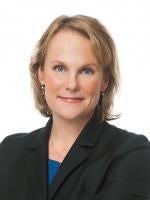On April 14, 2020, the Small Business Administration (SBA) issued a Second Interim Final Rule, providing guidance for individuals with self-employment income who file a Form 1040, Schedule C. The SBA will continue updating its guidance document and Frequently Asked Questions (FAQ’s), on a regular basis. The SBA has made it clear that the U.S. government will not challenge actions by lenders that conform to the Interim Final Rules and supporting guidance, as well as the FAQ document.
Most self-employed individuals are allowed to apply directly on their own behalf for PPP loans to recover their self-employment income, with one notable exception.
The Second Interim Final Rule states that “if you are a partner in a partnership, you may not submit a separate PPP loan application for yourself as a self-employed individual. Instead, the self-employment income of general active partners may be reported as a payroll cost, up to $100,000 annualized, on a PPP loan application filed by or on behalf of the partnership. Partnerships are eligible for PPP loans under the Cares Act, and the Administrator has determined, in consultation with the Secretary of the Treasury, that limiting a partnership and its partners (and an LLC filing taxes as a partnership) to one PPP loan is necessary to help ensure that as many eligible borrowers as possible obtain PPP loans before the statutory deadline of June 30, 2020.”
Publication of the Second Interim Final Rule comes nearly two weeks after many businesses, including many partnerships and limited liability companies, have already filed applications and been approved for PPP loans based on a plain reading of the CARES Act, which defines “payroll costs” as “compensation to employees.”
For businesses that filed their applications prior to the publication of the Second Interim Final Rule, there is some guidance indicating that businesses can rely on information known at the time of application, although it may prove to be incorrect, there is not yet clear guidance regarding the ability to amend applications based on new guidance or changes made to previous guidance.
Unfortunately, businesses that filed their applications prior to the publication of the Second Interim Final Rule appear to be foreclosed from seeking to amend their loan application once it has been processed.






 />i
/>i

